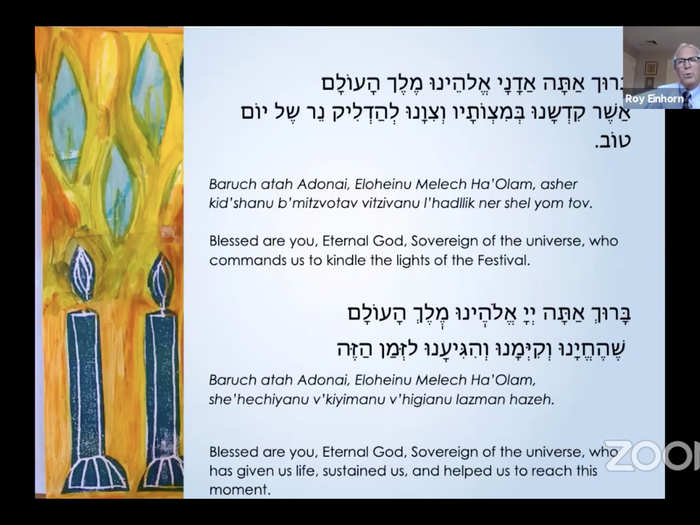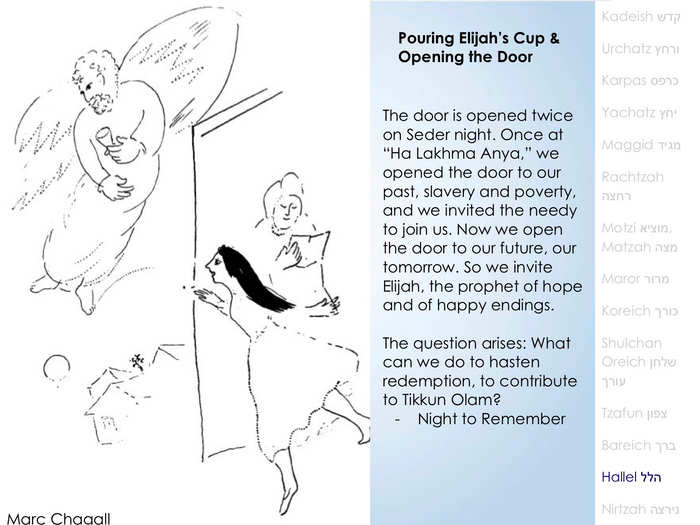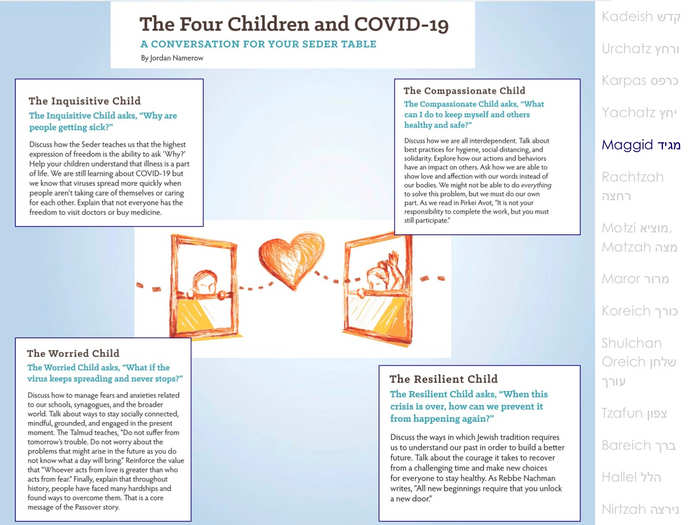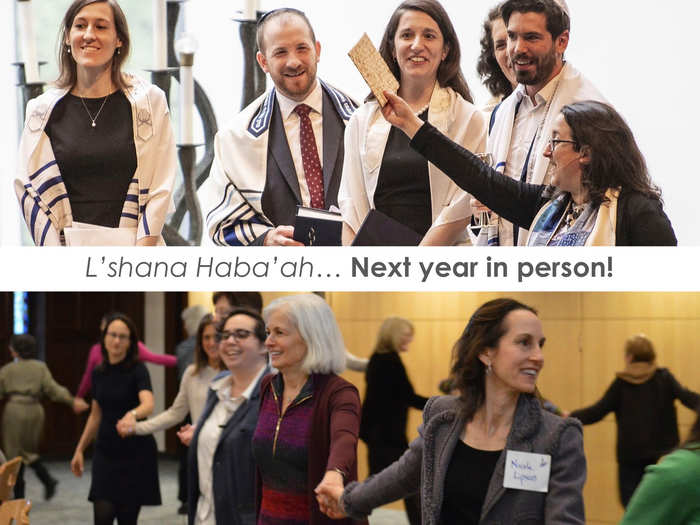- Home
- slideshows
- miscellaneous
- Here's how my hometown temple organized an international Zoom Seder with over 600 attendees
Here's how my hometown temple organized an international Zoom Seder with over 600 attendees
Over 600 people around the world ended up tuning in to the Seder — including some who weren't even members.

It was the first Seder for some, while others used it to experience Judaism for the first time.

"[There were] a bunch of people who [said] it was their first Seder, some in the conversion process, or even people who are checking out Judaism during this difficult time," Jacobson said.
Jacobson added that others had their whole families join the Seder and recreate the familial experience.
"Families are able to find their way to be together — in person or across great distances — using our Seder as the core," Jacobson said.
"[We] wrote our own Haggadah, which was really a fun process of trying to create something that was meaningful. And also, we did [the Seder] in an hour and 15 minutes!"
One traditional moment in a Seder is physically opening the door for the prophet Elijah. This moment was a little bit different during the pandemic, as doors were opened symbolically.

But Jacobson said that the spiritual resonance of welcoming Elijah into one's home was even more "profound" in the midst of the pandemic.
"Elijah heralds in the Messiah, and is the one who comes in order to give the Jewish people hope for the future," Jacobson said.
She added, "The idea that, yeah, our doors are closed and we're not leaving them anytime soon, but we all have such hope and joy and excitement for the future." It was an important moment in the Seder, marking the shift in tone "from degradation to hope."
"It was a celebration of resilience and Elijah, at that moment, was a moment of hope."
While everyone at the Seder was obviously separated by computer screens, it was still interactive.

"We were all doing it. We were all doing it to different levels and people had their tables set. They would have, you know, say, four people in a family," Jacobson said. "They would set the table and they'd have their Seder plate, and then they put the computer at the end of the table like we were the fifth guest. And people would start interacting with each other while this is all going on."
Jacobson acknowledged that it was 0f course still different from an in-person Seder.
"By definition, we are all so at home, like so radically at home. And no, it's not the same," Jacobson said. "It's not the same as going to your grandparents table that you've been going to your whole life or having all your cousins around. Like, it's not the same."
But that physical separation didn't hinder any connection — in fact, it energized those attending.

"It was just really, really fun energy, just watching everyone really get into it. And the most amazing thing was, at the end, people didn't leave. We were like singing and singing, and then we're waving, and then we're like, really?" Jacobson said.
"Scrolling through and seeing everyone's face, and everyone's waving and singing and just like dancing. And then eventually, like we were like, 'Okay, we're going to end the call,' which is such a weird way to end a Seder. But it just showed us how much it meant to people — and people were so happy to be there."
The Seder actually made space for a more communal celebration, and allowed attendees to celebrate more privately afterwards.

"There was also something really lovely about, you know, clicking 'leave meeting,' and then going and sitting with my wife on the couch, and having a glass of wine and also having the sort of intimacy of family," Jacobson said. "So to be in something huge and then, and then retreat back to the private felt really good and it felt like exactly what I needed this Passover. It was such a joy to be with everyone and it was so exciting and so high energy."
Jacobson said that, as an extrovert, she's been struggling with distancing measures — "I cannot wait for the moment when I can go and hug every single person I know" — but events like the Virtual Grand Communal Seder have helped with that distance.
"There have been very few moments when I have felt personally alone, because I feel like I am totally surrounded by community," Jacobson said. "And my only goal through this crisis is to hope that other people see that there are other ways, there are many ways for everyone to feel like they can be close to people that care about them, and that we're all in this together. We're all in this together, and we'll get out of this together."
The author's parents are members of Temple Israel of Boston.
Popular Right Now
Popular Keywords
Advertisement